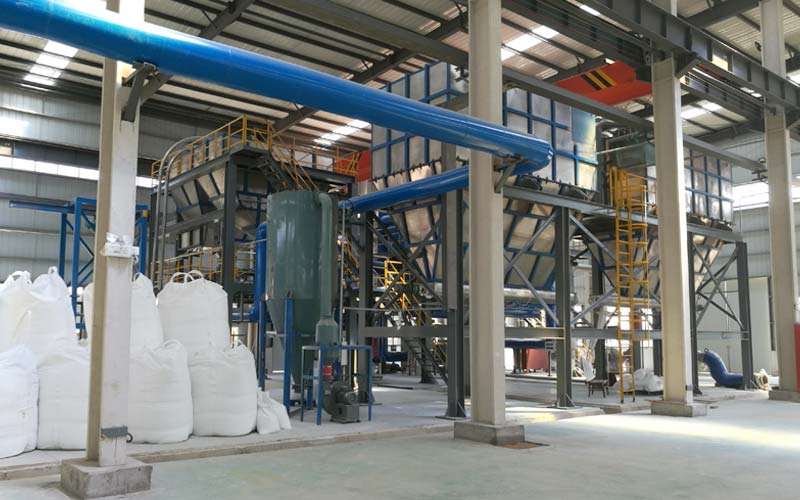Ultrafine talc grinding production line
Talc is generally lump, leaf, fibrous or radial, and the color is white, off-white, and it will have various colors due to other impurities. Talc is finally applied in powder form. Therefore, fine grinding and ultra-fine grinding are necessary processing techniques for talc. Superfine talcum powder is one of the most used ultrafine powder products in the world today. It is widely used in papermaking, plastics, rubber, paints, cosmetics, ceramics, etc.
At present, the processing of ultrafine talc powder mainly adopts the dry process. Although wet grinding has been studied, it is rarely used in industry.
Jet milling process
Raw material → feeding → crushing (hammer crusher → bucket elevator → vibrating feeder) → drying (vertical dryer) → medium crushing (hammer crusher) → fine grinding (Raymond mill) → superfine grinding (the jet mills used in industry include disc jet mills, fluidized bed counter-jet jet mills, circulating tube jet mills, etc.)→finished products

Talc has a Mohs hardness of 1, which is naturally crushable and has good grindability. For the fine grinding of talc, various types of Raymond mills are generally used, mainly producing 200 mesh and 325 mesh products. However, if fine grading equipment is installed, products with 500 to 1250 meshes can also be produced.
Dry production equipment mainly includes high-speed mechanical impact mills, jet mills, centrifugal self-mills, rotary mills, vibration mills, stirring mills, and tower mills. In addition to jet mills, in order to meet the requirements of user particle size distribution, other classification equipment generally needs to be equipped with fine classification equipment. Commonly used fine classification equipment is various turbo-type air centrifugal classifiers.
High-speed mechanical impact superfine grinding process
Raw material→crushing (hammer crusher, crushing to 8mm is enough)→mechanical impact superfine grinder→turbine type fine classifier (the coarse-grained product after classification can be returned to the mill or can be used as a separate product) →Finished product
The centrifugal self-grinding and rotary mill superfine grinding process of talc is generally similar to the high-speed mechanical impact superfine grinding process.
Acceptance standard for talcum powder entering the factory
| Indicator name | Unit | Quality requirements (600 mesh) | Quality requirements (325 mesh) | ||
| Standard | Lower limit index | Standard | Lower limit index | ||
| Mesh ≥ | Mesh | 600 | 325 | ||
| Whiteness ≥ | % | 85 | 82 | ||
| Silica content≤ | % | 50 | 48 | 48 | 46 |
| Calcium oxide content ≤ | % | 1.5 | 1.5 | ||
| Acid-soluble iron content ≤ | % | 1.0 | 1.0 | ||
| Moisture ≤ | % | 1.0 | 1.0 | ||
| Dust ≤ | mm2/g | 0.8 | 0.8 | ||
| Ignition loss ≤ | % | 10 | 10 | ||
| pH value | 8.0~10.0 | 8.0~10.0 | |||
| Fineness ≤ | % | 1 | 2 | 1 | 2 |
| Particle shape | Flake | Flake | |||
Talc powder should be stored in a dry warehouse. It can be used for paper fillers and resins, stickies adsorbents, 600 mesh talcum powder is used for newsprint systems, high-end food packaging base paper (without fluorescence), and 325 mesh talcum powder is used for DIP pulping. , Low-grade food packaging base paper (no fluorescence).
Article source: China Powder Network
